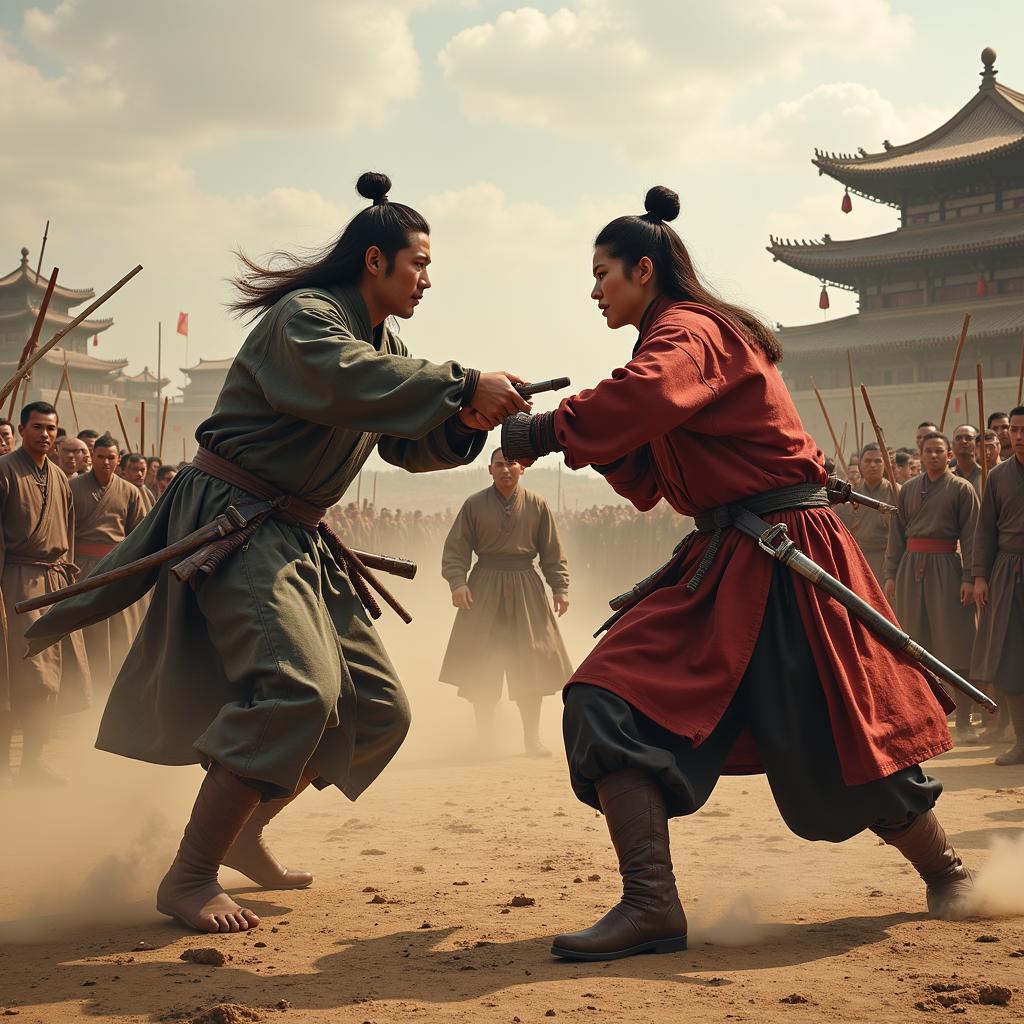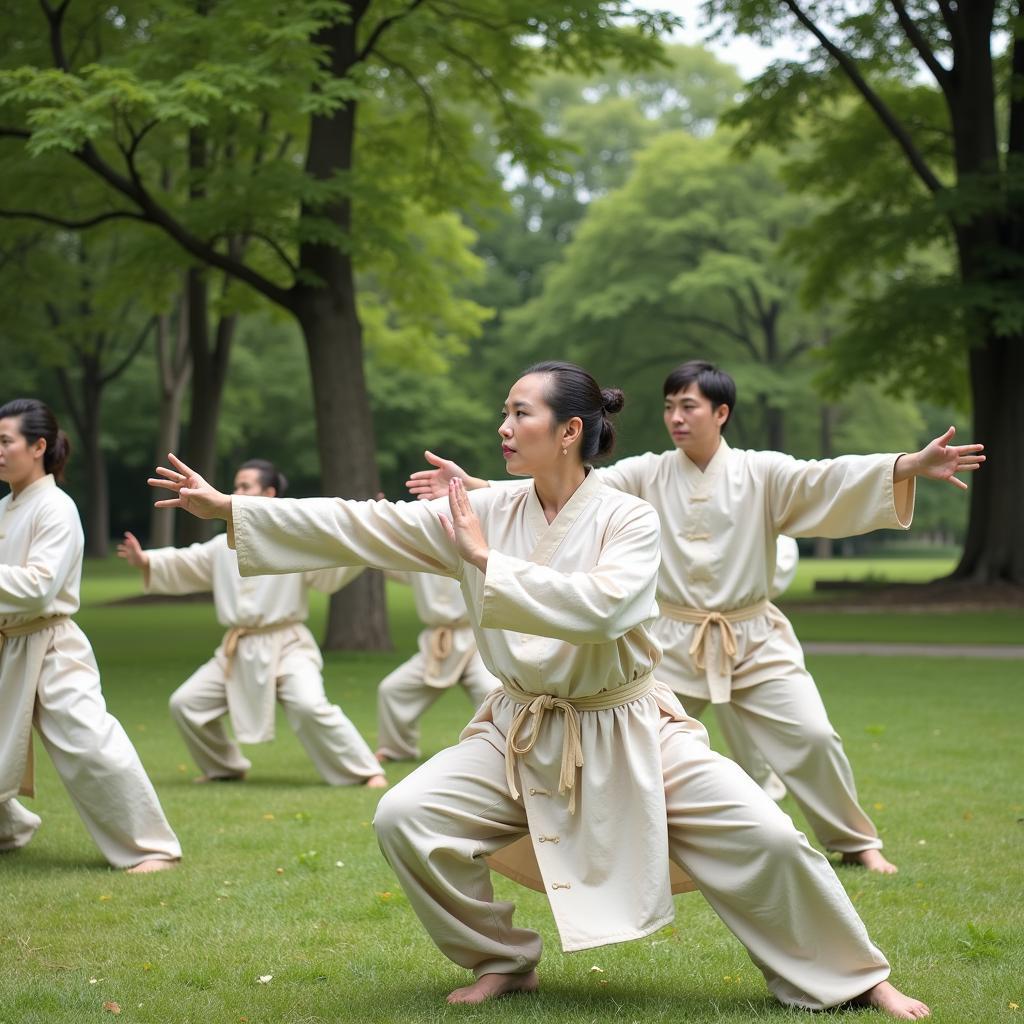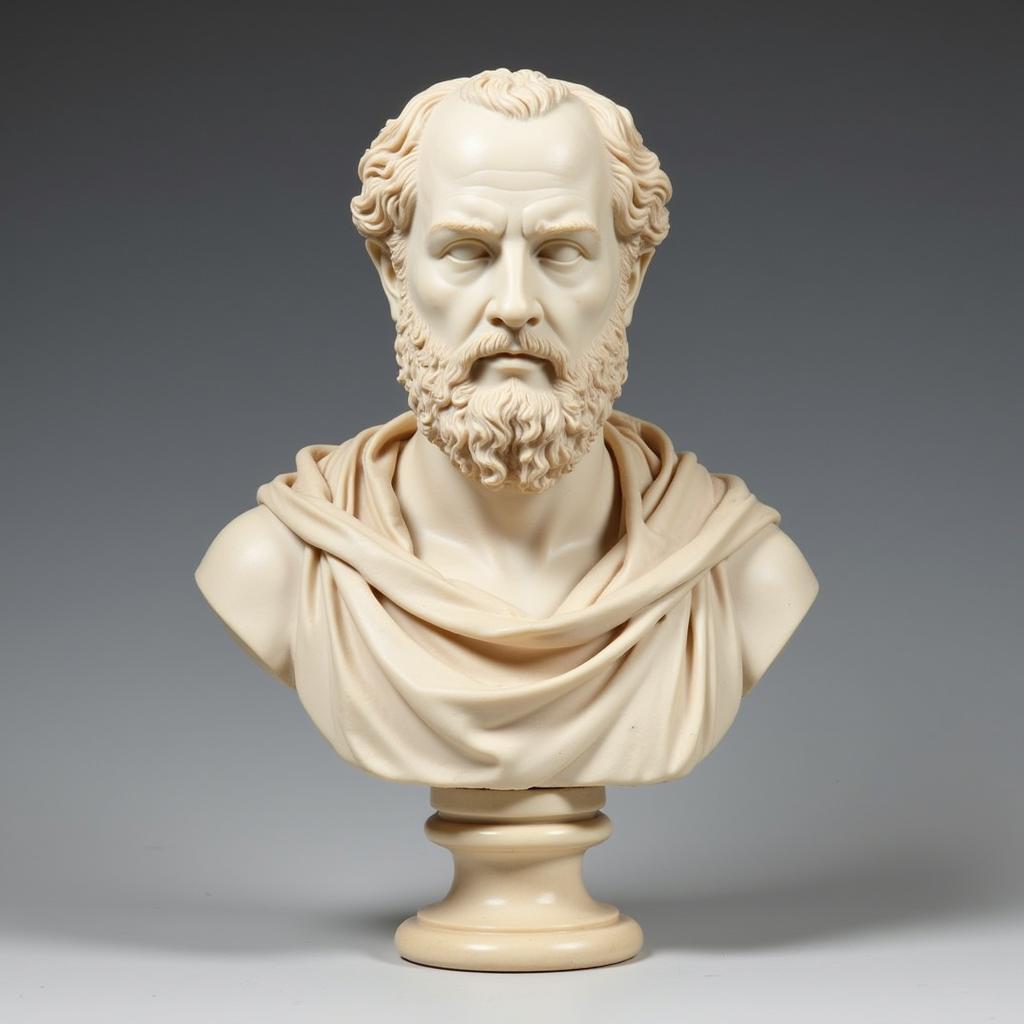Understanding Chinese Martial Arts Attire
Chinese Martial Arts Attire, rich in history and symbolism, is more than just clothing – it’s an integral part of the art form itself. From the flowing robes of Tai Chi to the practical uniforms of Kung Fu, each garment reflects centuries of tradition and martial discipline. This exploration delves into the intricate details and fascinating evolution of Chinese martial arts attire.
A Glimpse into History: The Origins of Martial Attire
Ancient warriors in China didn’t sport elaborate uniforms. Their attire was dictated by practicality, often consisting of simple tunics and trousers made from readily available materials like hemp or cotton. As martial arts evolved from battlefield techniques to formalized systems of practice, so did the clothing. Distinctive styles began to emerge, signifying different schools, lineages, and philosophies.
 Ancient Chinese Warriors in Paintings
Ancient Chinese Warriors in Paintings
The Significance of Colors and Symbols
Color plays a crucial role in Chinese culture, and martial arts attire is no exception. While specific meanings can vary between schools and styles, some common color associations include:
- Black: Represents strength, stability, and earth.
- White: Symbolizes purity, innocence, and new beginnings.
- Red: Associated with fire, power, and good luck.
- Yellow/Gold: Signifies royalty, wisdom, and the center.
Beyond color, various symbols embroidered or sewn onto the attire hold deep cultural and martial significance. Dragons, often representing power and wisdom, are a prevalent motif. Other common symbols include tigers (strength and courage), cranes (longevity), and yin-yang symbols (balance and harmony).
Types of Chinese Martial Arts Attire
The diversity of Chinese martial arts is reflected in the wide range of attire worn by practitioners. Here are some prominent examples:
Kung Fu Uniforms
Kung Fu uniforms, often referred to as “Kung Fu suits,” are designed for practicality and ease of movement. They typically consist of a loose-fitting jacket with a button or frog closure, paired with matching pants. Many schools incorporate specific colors or insignia to differentiate themselves.
Tai Chi and Qigong Garments
Tai Chi and Qigong emphasize flowing movements and internal energy cultivation. Their attire reflects this focus with loose, comfortable garments that allow for unrestricted motion. Flowing robes, often in silk or lightweight cotton, are common, emphasizing the graceful movements of these practices.
 Tai Chi Practitioners in the Park
Tai Chi Practitioners in the Park
Traditional Hanfu
While not strictly martial arts attire, traditional Hanfu garments have influenced the design of some martial arts uniforms. The Hanfu, characterized by flowing sleeves and intricate designs, embodies the elegance and cultural richness of ancient China.
Choosing the Right Attire
Selecting appropriate martial arts attire goes beyond aesthetics – it’s about respect for tradition and practicality. When choosing your attire, consider the following:
- Martial art style: Different styles have specific requirements or preferences.
- School guidelines: Your school may have specific uniform regulations.
- Comfort and fit: Ensure the garment allows for a full range of motion.
- Quality and durability: Choose well-made attire that can withstand rigorous training.
The Enduring Legacy of Chinese Martial Arts Attire
Chinese martial arts attire is a testament to the enduring legacy of these ancient practices. More than just clothing, these garments represent discipline, tradition, and the pursuit of self-improvement. Understanding the history and symbolism behind the attire adds another layer of appreciation for the artistry and cultural significance of Chinese martial arts.
If you’re ready to begin your own martial arts journey, finding the right school and attire is a crucial first step. Contact us today, or explore our website for more information on [martial arts schools called] and [martial arts westchester ny]. Our team is dedicated to providing you with the resources and support you need to embark on your martial arts path.


